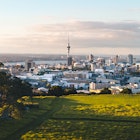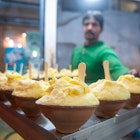
Jul 5, 2025 • 6 min read
Philadelphians are big-hearted, loyal and sometimes a bit rowdy, while the city itself offers the a blend of historic charm and soul, with plenty to do.

Jul 5, 2025 • 6 min read
Philadelphians are big-hearted, loyal and sometimes a bit rowdy, while the city itself offers the a blend of historic charm and soul, with plenty to do.

Jul 4, 2025 • 11 min read
Tantalizingly close to shore, the Channel Islands offer hikes and camping adventures within easy reach of the California coast.

Jul 4, 2025 • 5 min read
If you’re looking for the best beaches around Porto for seaside strolls, birdwatching and surfing, don’t miss these top 5 destinations.

Jul 4, 2025 • 9 min read
Here’s your easy guide to crossing the city, heading to the beach and even reaching Mexico by train in Southern California.

Jul 4, 2025 • 7 min read
From museums to sports to historic neighborhoods and great food, Boston has you covered. These are 11 of the best things to do in Boston.

Jul 4, 2025 • 8 min read
In a city surrounded by water, Seattle has many great beaches. Here are our favorites.

Jul 4, 2025 • 4 min read
Palm Springs basks in 300 days of California sunshine, with a lineup of festivals and cultural attractions year-round.

Jul 4, 2025 • 6 min read
New Zealand is a wonderland for outdoor adventure and a culture that's warm and welcoming. Here's how to travel, work and live for an extended time there.

Jul 4, 2025 • 8 min read
Dazzling Sydney or cultured Melbourne? Two writers take sides in the contest between one's shining surroundings and the other's days full of diversions.

Jul 4, 2025 • 6 min read
From African modern art to local architecture, explore Marrakesh's best museums with this guide.

Jul 3, 2025 • 11 min read
With hundreds of wineries and restaurants, Napa is dizzying to first-time visitors. Our expert guide is here to help.

Jul 3, 2025 • 5 min read
Visiting Napa Valley is a treat year-round. Here's a seasonal guide of what to expect and how to plan for it.

Jul 3, 2025 • 7 min read
In the sacred city of Varanasi, local delicacies represent centuries of tradition. Here’s what you need to try, and where to try it.

Jul 3, 2025 • 8 min read
From swimming near whale sharks to spotting colorful fish over a reef, here are the world's best places to snorkel.

Jul 3, 2025 • 6 min read
Mexico City street food fuses tradition and flavor, keeping locals well-fed. From chilaquiles to elotes, here's what to try and how to find it.

Jul 3, 2025 • 3 min read
Whether you're seeking fun festivals, fall apple-picking or live college football, you'll find it all in Atlanta.

Jul 3, 2025 • 9 min read
Edinburgh is the crown jewel of the British Isles, blending the medieval, the regal and the outright fantastic. Here are the top things to do.

Jul 3, 2025 • 6 min read
Pick your season carefully, prepare for a living lesson in Black history and never say “Hotlanta”: here’s all you need to know before visiting Atlanta.

Jul 2, 2025 • 5 min read
While Turin is the home of the Fiat, you'll want to go car-free and explore by public transportation or your own two feet.

Jul 2, 2025 • 7 min read
Whatever you enjoy, Atlanta has you covered. From lively public markets to compelling museums, these are the best things to do in Atlanta.

Jul 2, 2025 • 7 min read
Here are the books we’re reading on the road this summer, and the travel-worthy destinations they're set in.

Jul 2, 2025 • 7 min read
Discover the best of Santa Barbara from sunny beaches to wine tastings and vibrant nightlife with this comprehensive guide.